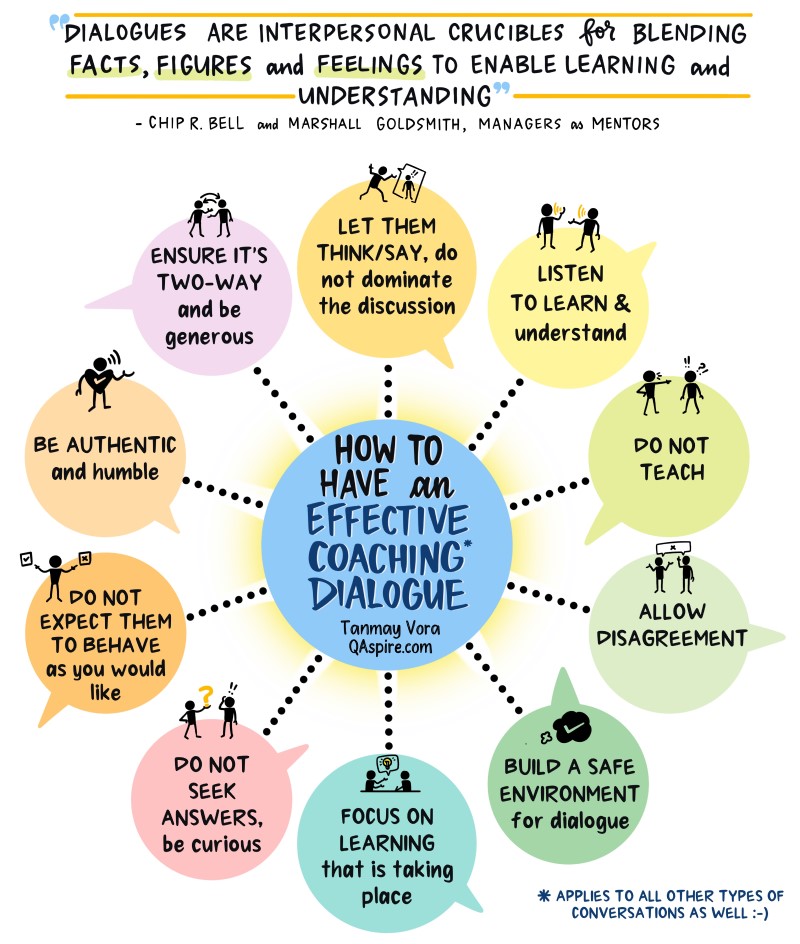How to Have an Effective Dialogue
Tanmay Vora
Relationships are built (or ruined) one conversation at a time. I have always seen effective conversation as a way to transfer energy between people in a way that fosters understanding, builds trust and inspires growth/change.
I can distinctly remember every single radical conversation I had with my peers/mentors/bosses that moved the needle for me and led me to growth opportunities. As someone who has immensely benefited from the conversations other people had with me, I try to use my conversations with others as a way to transfer positive energy that leads to learning, change and growth. This mindset of seeing conversations as a medium to exchange energy helps me immensely when I coach, train and facilitate people and teams.
Conversations are the currency of great leadership because they have the power to guide other people’s journeys, foster collaboration, build culture and tackle challenges as a team.
In their book “Managers as Mentors”, Chip R. Bell and Marshall Goldsmith write,
“Dialogues are interpersonal crucibles for blending facts, figures and feelings to enable learning and understanding.”
And yet, leaders having effective dialogues that move the needle for others is a rarity in many teams/organizations I work with. Why does this happen? Here are a few reasons that come to mind:
-
Poor listening (for verbal and non-verbal cues)
-
Dominating the conversation (ego, conversational narcissism)
-
Power struggle and authority
-
Extreme focus getting things done at the cost of others
-
Prejudices and constant judgment of others
-
Distractions
-
Lack of empathy
Here is a simple 10 point checklist sketchnote on how to have effective coaching dialogue with others.

Related Reading at QAspire:
- Leadership and the art of effective listening
- The art of having a good conversation
- Attributes of a Powerful Question
Also Check out:
- Raise the Bar: A collection of 68+ HD sketchnotes with timeless insights on leadership, learning and change.
- Register for the upcoming “Visual Thinking and Sketchnote” workshop to reconnect with your visual thinking super-powers for better learning, communication and collaboration.